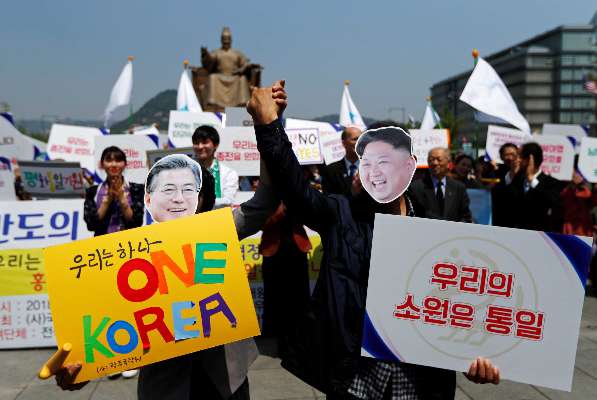Seoul, South Korea 25: North and South Korea will hold their third summit Friday, stirring hopes of peace following years of tensions over the North’s nuclear and missile tests.
The North’s leader Kim Jong Un will meet the South’s President Moon Jae-in on the southern side of the border truce village of Panmunjom, ahead of a summit with US President Donald Trump expected in the coming weeks.
Friday’s meeting comes after tensions soared last year as the North made rapid progress on its banned nuclear weapons programmes, while Trump engaged in an increasingly bellicose verbal scrap with Pyongyang’s leader. North and South previously held summits in Pyongyang in 2000 and 2007.
Here are some key moments in the decades-long standoff between the two Koreas:
War but no peace
The US and Soviet Union agreed to divide the Korea between them in the days after Japan’s surrender ended the Second World War and its rule over the peninsula. In June 1950 the Communist North invaded the capitalist South, sparking a brutal war that killed millions of people. Beijing backed Pyongyang in the three-year conflict, while Washington threw its support behind the South – alliances that have largely endured. The two sides fought each other to a stalemate and hostilities ceased in 1953 with an armistice rather than a formal peace treaty, leaving them technically still at war.
Sending in the assassins
Pyongyang has tested the ceasefire with numerous attacks. It sent 31 commandos to Seoul in a botched attempt to assassinate then-President Park Chung-Hee in 1968. All but two were killed. In the “axe murder incident” of 1976, North Korean soldiers attacked a work party trying to chop down a tree inside the Demilitarized Zone, leaving two US army officers dead. Pyongyang launched perhaps its most audacious assassination attempt in Myanmar in 1983, killing 21 people in a bomb blast in a Yangon mausoleum, but visiting South Korean general-turned-president Chun Doo-hwan survived. In 1987 a bomb on a Korean Air flight exploded over the Andaman Sea, killing all 115 people on board. Seoul accused Pyongyang, which denied involvement.
Rays of hope
The South’s first liberal president for decades, Kim Dae-jung, instituted a “Sunshine Policy” of engaging with the North, and went to Pyongyang in 2000 for the first inter-Korean summit since the Korean War, earning himself the Nobel peace prize. Inter-Korean projects followed, including the Kaesong industrial park, where South Korean firms employed North Korean workers, and hundreds of thousands of Southern tourists visited the North’s scenic Mount Kumgang. Kim’s liberal successor Roh Moo-hyun went back to Pyongyang in 2007 towards the end of his term, but the North had already carried out its first nuclear test and after conservative Lee Myung-bak was sworn in the following year Seoul took a harder line against Pyongyang.
AFP
